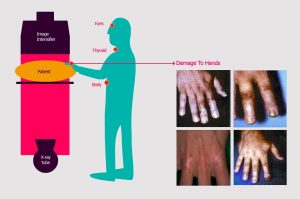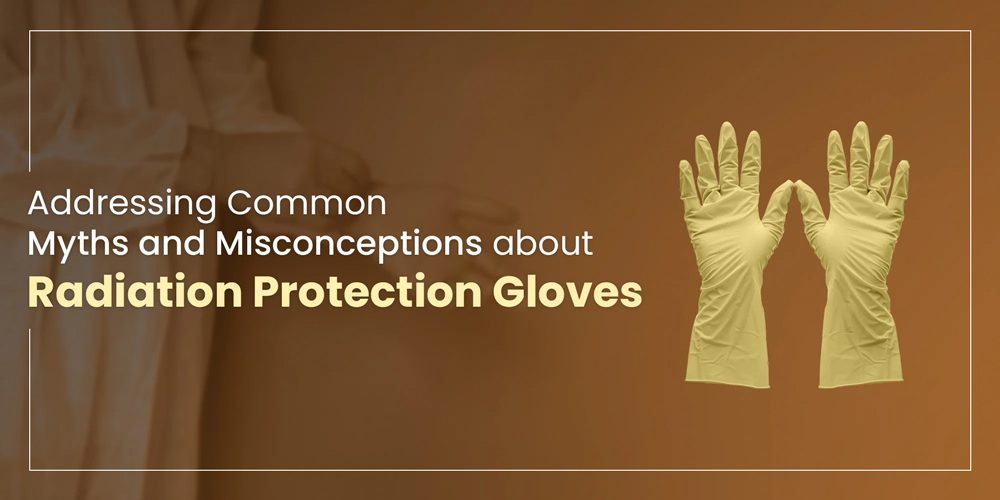Radiation protection gloves are an essential part of personal protective equipment for healthcare professionals, particularly those working in environments where exposure to ionizing radiation is common, such as radiology departments, surgical theaters, and nuclear medicine facilities. These gloves are designed to minimize the harmful effects of radiation on the hands, which are often the most exposed parts of the body during medical procedures involving X-rays or other radioactive materials. Despite the clear benefits of these gloves, many myths and misconceptions surround their use, leading to potentially dangerous practices.
This article aims to address some of these common myths and highlight the importance of wearing radiation protection gloves to prevent serious health issues.
Common Concerns About Not Wearing Radiation Protection Gloves
The risks of not wearing radiation protection gloves go beyond the immediate danger of radiation exposure. Over time, repeated exposure to even low levels of radiation can lead to various skin conditions and long-term health issues. Some of the common concerns include:
- Pigmentation Changes:Continuous exposure to radiation can cause changes in skin pigmentation, leading to dark spots or uneven skin tone on the hands.
- Skin Burns:Prolonged exposure to radiation without adequate protection can result in radiation burns, which can be painful and lead to long-term damage.
- Hand Itching and Irritation: Radiation exposure can cause chronic itching and irritation of the skin, making it uncomfortable and difficult for healthcare professionals to perform their duties.
- Cancer:Perhaps the most serious risk, long-term exposure to radiation without protection increases the risk of developing skin cancer.

Given these risks, it’s clear that radiation protection gloves play a vital role in safeguarding the health of medical professionals. However, despite the evidence, some still believe that these gloves are unnecessary or ineffective.
Let’s explore and debunk seven common myths about radiation protection gloves.
Myth #1: Radiation Protection Gloves Are Uncomfortable and Reduce Dexterity
Fact: Modern radiation protection gloves are designed with comfort and agility in mind. They are made from flexible, lightweight materials that allow for precise movements and comfortable wear over extended periods. Innovations in glove design have significantly improved their usability without compromising protection.
Myth #2: Lead-Free Gloves Are Less Effective Than Leaded Gloves
Fact: Lead-free gloves are just as effective as leaded gloves in providing radiation protection. They are made from advanced materials that offer similar, if not better, protection levels while being more environmentally friendly and easier to handle. The choice between leaded and lead-free gloves often depends on specific operational needs and environmental considerations, not effectiveness.
Myth #3: Only Those Handling High Radiation Levels Need Gloves
Fact: Even low levels of radiation exposure can accumulate over time, leading to significant health risks. All healthcare professionals who work in environments with any level of radiation exposure should wear protective gloves. The cumulative effect of low-dose exposure can be just as harmful as high-dose exposure over a shorter period.
Myth #4: Radiation Protection Gloves Are Not Necessary for Short Procedures
Fact: Short procedures can still expose healthcare workers to dangerous levels of radiation. The duration of exposure is not the only factor; the intensity and frequency of exposure also matter. Consistently wearing radiation protection gloves, even during brief procedures, helps minimize the risk of long-term health issues.
Myth #5: Gloves Don’t Protect Against All Radiation Types, So They’re Useless
Fact: While it’s true that no single material can protect against all types of radiation, radiation protection gloves are designed to shield against the most common and harmful forms encountered in medical settings, such as X-rays. Their purpose is to reduce the amount of radiation reaching the skin, thus lowering the risk of radiation-induced damage.
Myth #6: Radiation Protection Gloves Are Too Expensive to Use Regularly
Fact: The cost of radiation protection gloves is a small price to pay compared to the potential medical expenses and loss of work time associated with radiation-induced health problems. Investing in high-quality gloves is an investment in the long-term health and safety of healthcare professionals.
Myth #7: Radiation Protection Gloves Aren’t Necessary If You Use Other Protective Gear
Fact: While other protective gear, such as lead aprons and thyroid shields, offer essential protection, they do not cover the hands. Radiation protection gloves are specifically designed to protect the hands, which are often in close proximity to radiation sources during medical procedures. Using gloves in conjunction with other protective equipment provides comprehensive protection.
Radiation protection gloves are an fundamental part of PPE. Despite the myths and misconceptions that persist, the facts clearly show that these gloves are crucial for preventing a range of serious health issues, from skin irritation and burns to cancer.


